Backstep flow
Case directory
$FOAM_TUTORIALS/incompressible/simpleFoam/pitzDaily
Summary
The fluid flows in from the region "inlet" at (10, 0, 0) m/s and out from the region "outlet". A no-slip condition is set for the channel walls, and the problem is solved in 2 dimensions with a single mesh in the Z direction. The standard k-ε model is used as the turbulence model.
 Model geometry
Model geometry
The meshes are as follows.
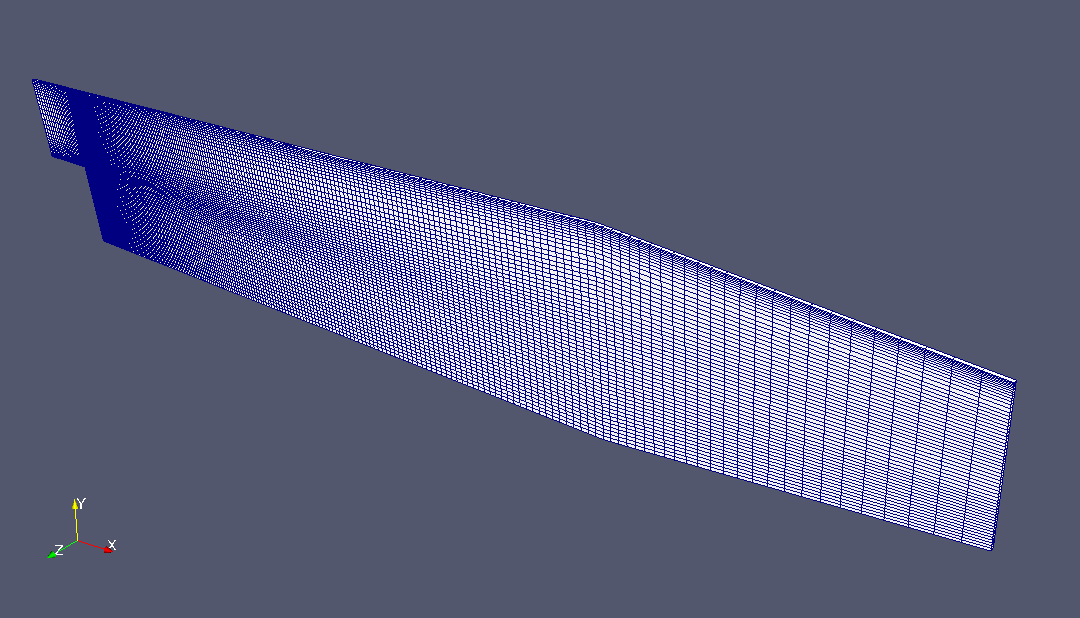 Meshes
Meshes
We use the streamlines function to draw streamlines during the calculation. The configuration file is system/streamlines, which is referenced in system/controlDict as shown below.
nLines 10; start (-0.0205 0.001 0.00001); end (-0.0205 0.0251 0.00001); fields (p k U); // Must be last entry #includeEtc "caseDicts/postProcessing/visualization/streamlines.cfg"
The streamline data is saved as a vtk format file under the directory postProcessing/sets at each time. This file can be loaded into ParaView to visualize the streamlines.
To visualize the calculated turbulence energy and turbulence dissipation rate, check "k" and "epsilon" in the "Properties" tab in ParaView.
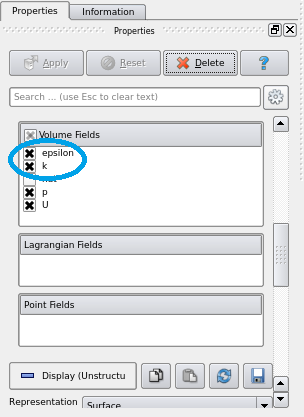 Check "k" and "epsilon"
Check "k" and "epsilon"
The calculation result is as follows.
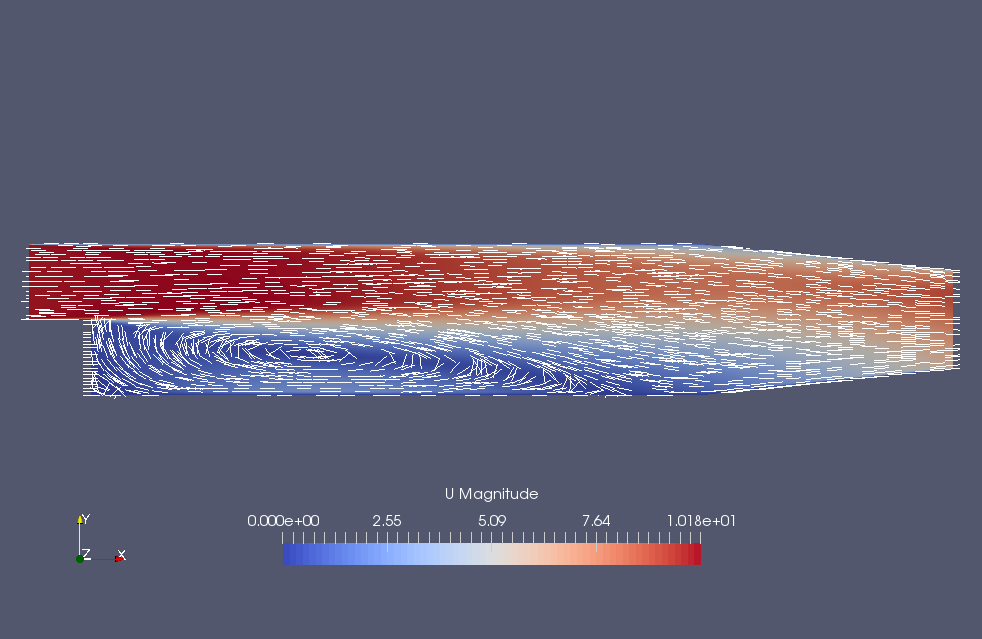 Flow velocity (U)
Flow velocity (U)
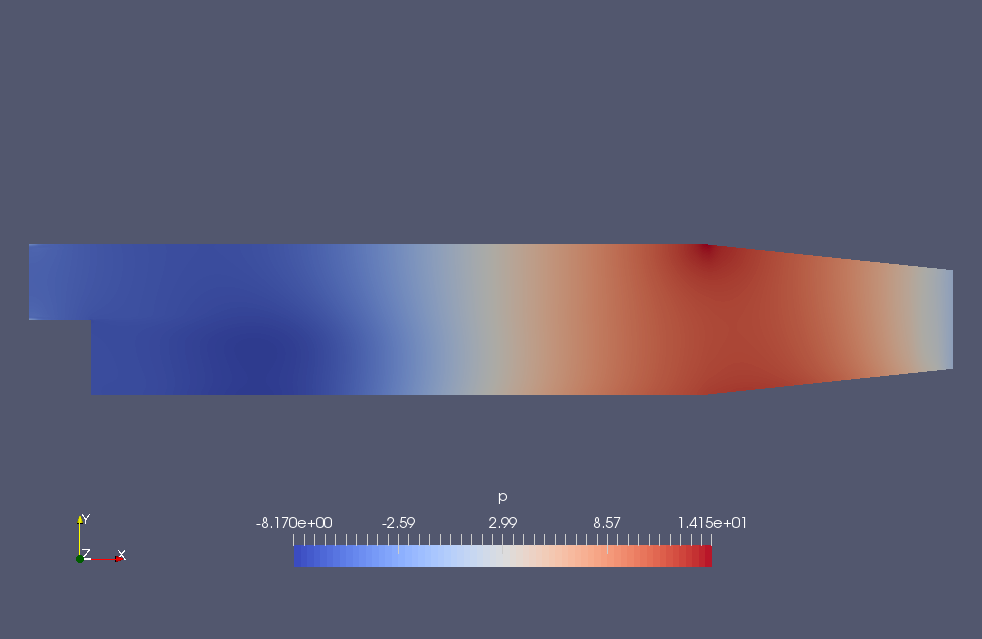 Pressure (p)
Pressure (p)
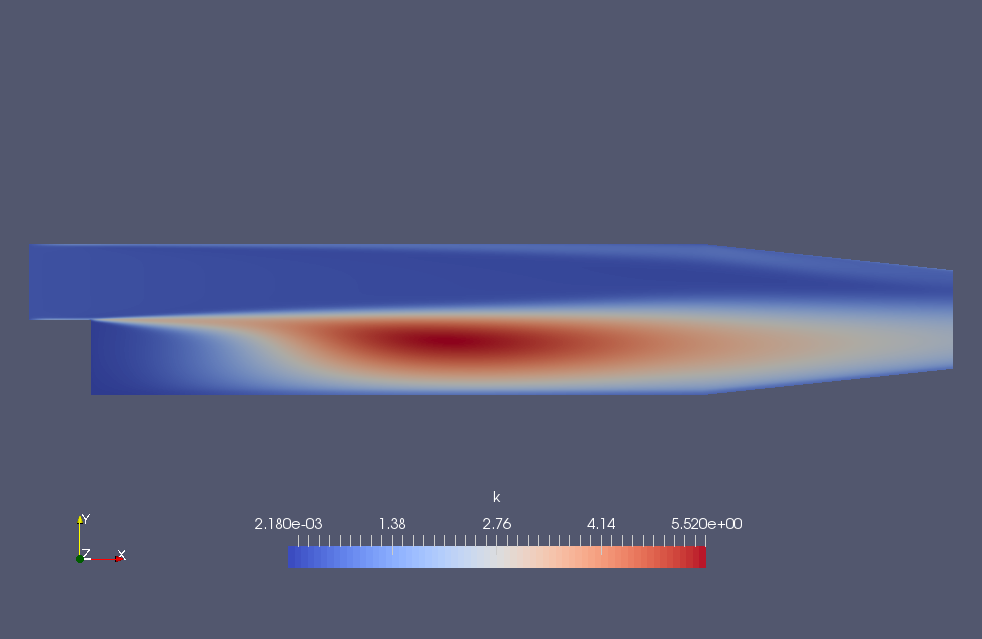 Turbulent energy (k)
Turbulent energy (k)
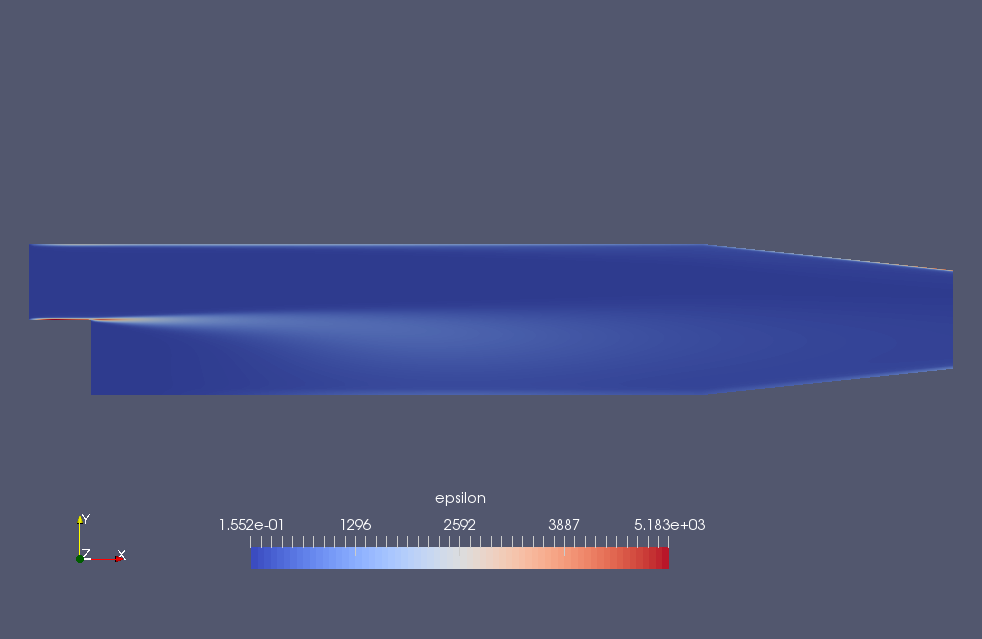 Turbulent dissipation rate (epsilon)
Turbulent dissipation rate (epsilon)
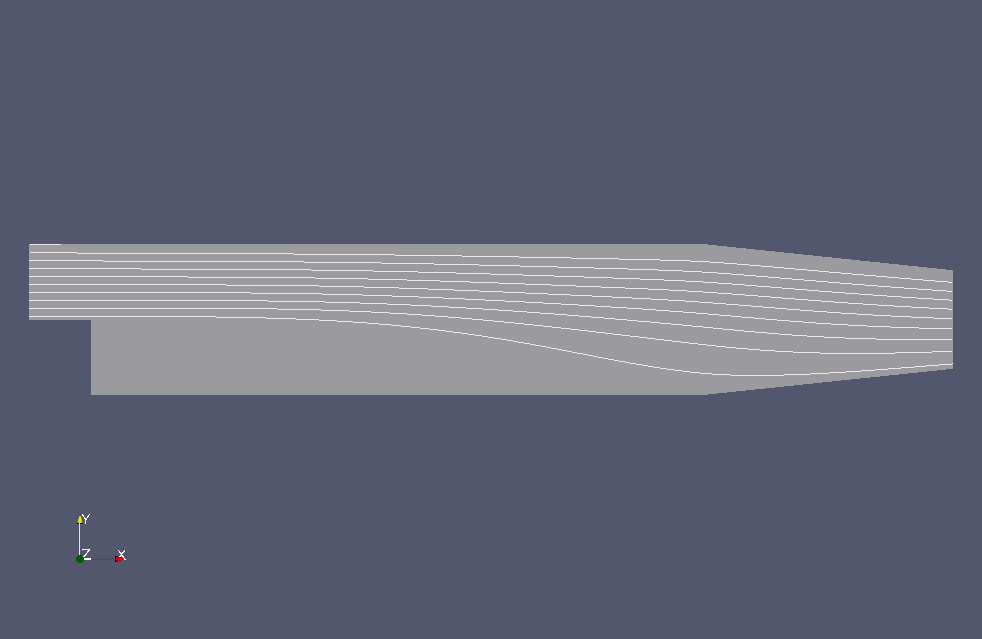 Streamlines by streamlines function
Streamlines by streamlines function
Commands
cd pitzDaily
blockMesh
simpleFoam
paraFoam
Calculation time
12.04 seconds *Single, Inter(R) Core(TM) i7-2600 CPU @ 3.40GHz 3.40GHz